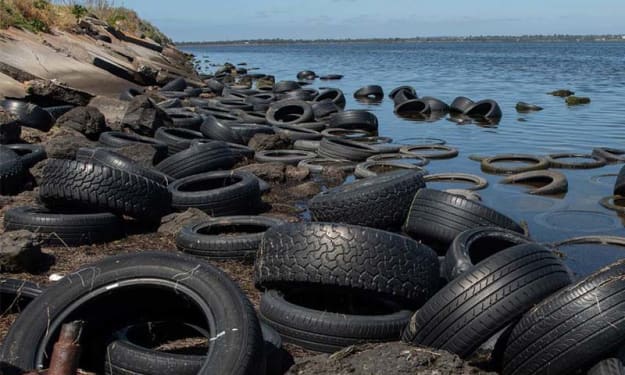The Ocean Crisis Caused by Microplastics
Impact of Microplastics on Marine Ecosystems and Human Health

The proliferation of microplastics in the world's oceans represents a dire environmental crisis. These minuscule plastic fragments, often less than 5 millimeters in diameter, infiltrate marine ecosystems and pose severe threats to aquatic life, human health, and the overall integrity of marine environments. This article explores the origins, impacts, and potential solutions to the ocean crisis caused by microplastics.
Understanding Microplastics
Definition and Origins
Microplastics are tiny plastic particles that originate from various sources, including the breakdown of larger plastic debris, synthetic fibers from textiles, and microbeads used in personal care products. These particles can be categorized into two primary types:
Primary Microplastics: Manufactured small for specific purposes, such as in cosmetic products and industrial abrasives.
Secondary Microplastics: Result from the fragmentation of larger plastic items like bottles, bags, and fishing nets due to environmental factors like UV radiation and mechanical abrasion.
Pathways to the Ocean
Microplastics enter the ocean through numerous pathways. Runoff from urban areas, rivers, and wastewater treatment plants are significant contributors. Moreover, maritime activities, including fishing and shipping, release microplastics directly into the marine environment. Wind and atmospheric deposition also play a role in transporting microplastics over long distances.
Environmental Impact
Marine Life and Ecosystems
Microplastics infiltrate marine ecosystems, from the water column to the ocean floor. Marine organisms, ranging from microscopic plankton to large marine mammals, inadvertently ingest these particles. The ingestion of microplastics leads to physical and chemical harm:
- Physical Harm: Blockages in the digestive tracts of marine animals can cause malnutrition, reduced growth, and mortality. Small organisms, including zooplankton, mistake microplastics for food, disrupting the base of the marine food web.
- Chemical Harm: Microplastics adsorb toxic pollutants like heavy metals, pesticides, and persistent organic pollutants (POPs) from the surrounding water. When ingested by marine organisms, these chemicals can bioaccumulate and biomagnify, leading to toxic effects throughout the food chain.
Habitat Disruption
Microplastics also affect marine habitats. Coral reefs, vital to marine biodiversity, are particularly susceptible. Microplastics can smother coral polyps, impede their growth, and reduce their resilience to disease and environmental stressors. Similarly, sedimentary habitats, such as seagrass beds and mangroves, can be contaminated with microplastics, altering their structure and function.

Human Health Concerns
Seafood Consumption
Humans are exposed to microplastics primarily through seafood consumption. Fish and shellfish, which accumulate microplastics in their tissues, are a direct source of human ingestion. The potential health effects of microplastics on humans are a growing concern:
- Toxicity: The chemicals associated with microplastics, including endocrine disruptors and carcinogens, can pose serious health risks.
- Inflammation and Cellular Damage: Laboratory studies have shown that microplastics can cause inflammation, cellular damage, and disruptions in the immune system.
Drinking Water and Airborne Exposure
Microplastics have been detected in drinking water and airborne dust, indicating additional exposure routes. The health implications of inhaling or consuming microplastics through these pathways are still under investigation but raise significant concerns.
Economic Impact
Fisheries and Tourism
The economic ramifications of microplastic pollution are far-reaching. Fisheries, a critical source of livelihood for millions, face declining fish stocks and compromised seafood quality. The contamination of marine products can lead to economic losses and affect food security.
Marine tourism, which relies on pristine beaches and healthy marine ecosystems, also suffers. The presence of microplastics on beaches and in coastal waters can deter tourists, leading to economic downturns in regions dependent on tourism revenue.
Cleanup and Mitigation Costs
Addressing microplastic pollution involves substantial financial resources. Cleanup operations, research initiatives, and mitigation strategies require investment from governments, industries, and non-governmental organizations. The cost of implementing effective waste management systems and pollution control measures adds to the economic burden.
Addressing the Crisis
Policy and Regulation
Effective policy and regulatory frameworks are essential to combat microplastic pollution. Governments and international bodies must implement and enforce regulations that limit plastic production, use, and disposal. Key measures include:
- Bans and Restrictions: Prohibiting single-use plastics and microbeads in personal care products can significantly reduce the influx of primary microplastics.
- Extended Producer Responsibility (EPR): Mandating producers to take responsibility for the entire lifecycle of plastic products, including their disposal and recycling.
- International Agreements: Strengthening international agreements, such as the Basel Convention, to address the transboundary movement of plastic waste.
Technological Innovations
Technological advancements play a crucial role in mitigating microplastic pollution. Innovations in material science, waste management, and pollution control can provide effective solutions:
- Biodegradable Plastics: Developing and promoting the use of biodegradable plastics can reduce the persistence of plastic waste in the environment.
- Advanced Filtration Systems: Implementing advanced filtration systems in wastewater treatment plants to capture microplastics before they reach water bodies.
- Ocean Cleanup Technologies: Deploying ocean cleanup technologies, such as floating barriers and specialized vessels, to remove plastic debris from the marine environment.
Public Awareness and Education
Raising public awareness and fostering education on the impacts of microplastics are vital for driving behavioral change. Campaigns and educational programs can encourage individuals to reduce plastic use, support sustainable alternatives, and participate in cleanup activities.
Scientific Research
Continued scientific research is imperative to understanding the full scope of microplastic pollution and developing effective mitigation strategies. Research priorities include:
- Source Identification and Quantification: Identifying major sources of microplastics and quantifying their contribution to marine pollution.
- Impact Assessment: Investigating the ecological and health impacts of microplastics on marine life and humans.
- Innovative Solutions: Exploring innovative solutions for plastic waste management, including plastic recycling technologies and alternative materials.
Global Initiatives and Collaboration
International Organizations
International organizations, such as the United Nations Environment Programme (UNEP) and the International Maritime Organization (IMO), play a pivotal role in addressing microplastic pollution. Their initiatives include:
- Global Partnership on Marine Litter (GPML): A multi-stakeholder partnership that aims to prevent marine litter, including microplastics, through global collaboration and action.
- MARPOL Convention: The International Convention for the Prevention of Pollution from Ships, which addresses the discharge of plastics from ships into the marine environment.
Non-Governmental Organizations (NGOs)
NGOs are instrumental in raising awareness, advocating for policy changes, and implementing on-the-ground projects to combat microplastic pollution. Organizations such as Ocean Conservancy, Plastic Pollution Coalition, and The Ocean Cleanup are at the forefront of these efforts.
Industry Collaboration
Collaboration with the plastic manufacturing and packaging industries is crucial for reducing plastic waste. Industry stakeholders can contribute by:
- Redesigning Products: Developing products that use less plastic, are easier to recycle, and have a longer lifespan.
- Supporting Recycling: Investing in recycling infrastructure and technologies to enhance the circular economy of plastics.
- Corporate Social Responsibility (CSR): Implementing CSR initiatives that focus on reducing plastic footprints and supporting environmental conservation efforts.
Conclusion
The ocean crisis caused by microplastics is a multifaceted challenge that requires a concerted global effort to address. Through effective policy and regulation, technological innovation, public awareness, and international collaboration, we can mitigate the impacts of microplastics and protect the health of our oceans. The stakes are high, but with continued commitment and action, we can turn the tide on this pervasive environmental threat and ensure a sustainable future for marine ecosystems and human communities alike.






Comments
There are no comments for this story
Be the first to respond and start the conversation.